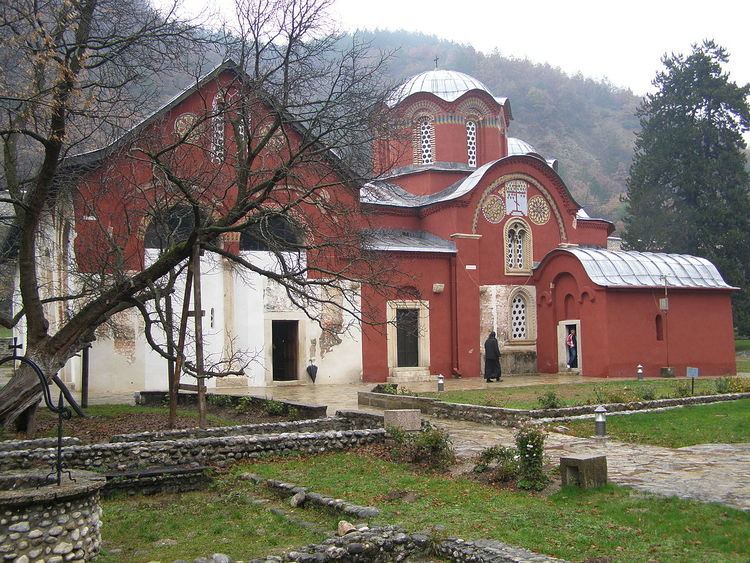 | ||
Panonija 2010 hvosno by d b trade co
Hvosno (Serbian: Хвосно, "thick wood") was a medieval Serbian county (Serbian: жупа or župa) located in the northern part of the Metohija region, in what is today Kosovo. It roughly encompassed the areas of the modern Istok and Peć municipalities. It was surrounded by the counties of Jelci to the north; Budimlja and Plav to the west; Zatrnava to the south; Draškovina and Podrimlje to the east and southeast.
Contents
Borivoje ugrinovic nemiri proslosti hvosno
Name
The name of Hvosno is derived from the Old Slavic word hvost, meaning 'thick wood', probably due to dense forests that grow on the slopes of surrounding mountains. Several of the oldest toponyms in the area have parallels in the Czech Republic (Trebovitić–Trebovetice, Ljutoglav–Litohlavy and Drsnik–Drsník), showing that it was inhabited by Slavs.
History
Hvosno, as Hosnos (Greek: Χoσνoς) was mentioned in three charters of Emperor Basil II (r. 960–1025) as being under the jurisdiction of the Eparchy of Prizren. During 11th and 12th century, Eparchy of Prizren (including Hvosno) was under jurisdiction of the Eastern Orthodox Archbishopric of Ohrid. Serbian Grand Prince Stefan Nemanja (r. 1169–1196) managed to gain full independence from the Byzantines and started to expand his domain, capturing Hvosno among other territories. Hvosno was mentioned in the Life of Saint Simeon, written between 1201 and 1208 by his son and first Serbian archbishop Saint Sava, as one of the districts that Serbian Grand župan Stefan Nemanja (Saint Simeon) conquered from the Byzantine Empire between 1180 and 1190. Archbishop Sava mentioned Hvosno as one of Stefan Nemanja's "grandfather's land" which he recaptured It appears that beside the župa (county) of Hvosno there was also a larger territory called zemlja (lit. "land") of Hvosno which encompassed the župa of Hvosno and some of the surrounding ones: Kujavča, Zatrnava, Podrimlje and Kostrc. The zemlja of Hvosno later corresponded to the territorial spread of the bishopric of Hvosno. Nemanja gave the rule of Hvosno to his elder son Vukan, who in 1195 is titled as "King of Duklja, Dalmatia, Travunia, Toplica and Hvosno" (Velcani, regis Diokle, Dalmatie, Tripunie, Toplize et Cosne).
After the dynastic conflict between brothers Vukan and Stefan, which ended with Vukan's defeat, Stefan made Hvosno part of his royal domain. In 1220, King Stefan the First-Crowned donated several villages in Hvosno, namely: Peć, Crni Vrh, Stlpezi, Trebovitići, Goražda Vas, Naklo Vas, Čelopeci, Labljani and Ljutoglav (with the nearby castle which served as the district's centre), to his newly founded monastery of Žiča, which served as a seat of the Serbian archbishop. Beside the mentioned villages, Stefan also gave to Žiča two large pastures in Hvosno named Slano Polje and Tmasti Gvozd. Archbishop Sava founded the monastery of the Holy Virgin of Hvosno near the village of Studenica and made it a seat of the newly founded Eparchy of Hvosno, one of the 7 suffragan dioceses of the Serbian Orthodox Church (Serbian Archbishopric) created in 1219.
When the Archbishopric seat was transferred from Žiča to the town of Peć around 1290, Hvosno became one of the religious and cultural centers of the Serbian medieval state. During the Medieval period Serbian kings and emperors continued to donate villages and lands in Hvosno to major Serbian monasteries: King Stephen Uroš I of Serbia (1243–1276) donated the villages of Štupelj and Zahak in Hvosno to the Serbian Hilandar monastery in Mount Athos, and later donated the village of Rakoš to the church of Holy Virgin in Ston, and built the church of Saint Nicholas near Peć which he donated with the nearby marketplace of Stlp to the monastery of Mileševo, while his brother King Stefan Milutin donated the pasture of Labićevo to Hilandar and village of Gumnište to monastery of Banjska; in 1330 King Stefan Dečanski donated several villages in Hvosno (Strelce, Ljuboliči, Prapraćani and Ljubuša) to his newly founded monastery of Dečani; in 1348 Emperor Stefan Dušan donated the villages of Kosorići, Dnepolje, Doljani and Češkovo to the Hilandar monastery and katun (pastoral community) of Sinainci to the Monastery of the Holy Archangels in Prizren. Finally in 1379, Serbian prince Lazar donated the village of Jelšanica (Jošanica in modern Serbian) in Hvosno to Hilandar.
After the collapse of the Serbian Empire and extinction of the Nemanjić dynasty in 1371, Hvosno came briefly under the control of the Balšić family, then in 1378, after the death of Đurađ I Balšić, it came under the control of Vuk Branković and remained under the rule of his family until the Ottoman conquest in 1455.
